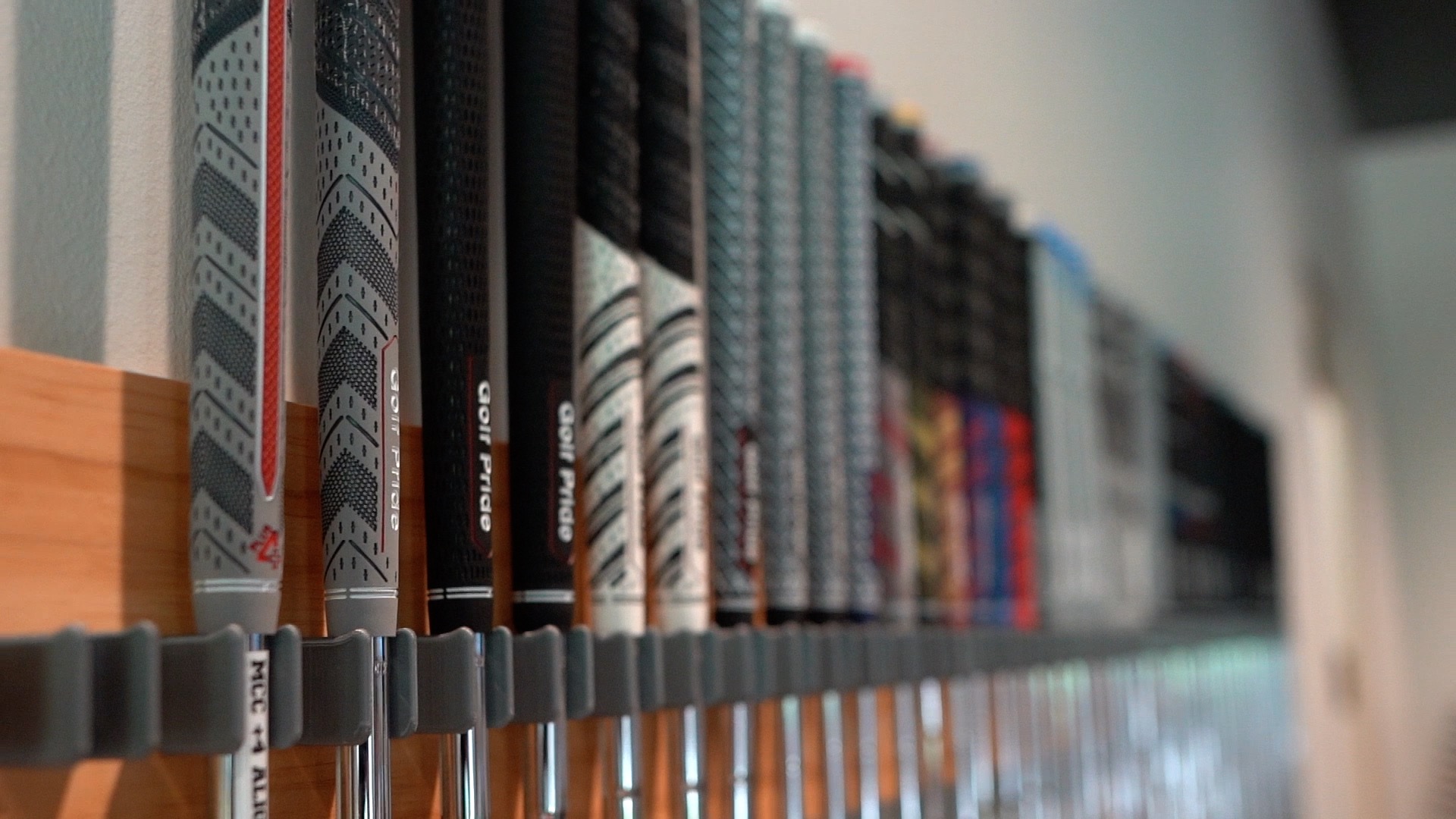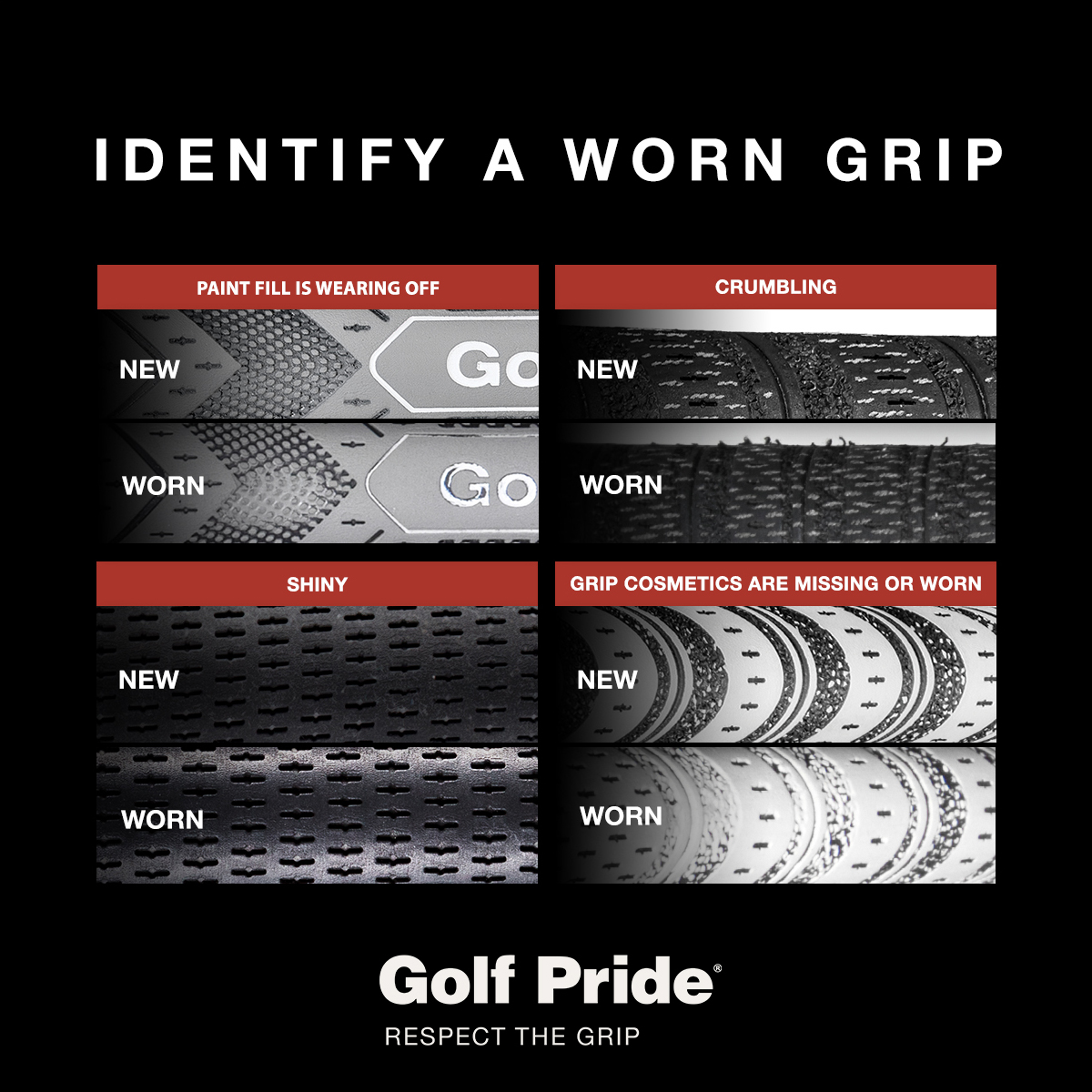
I think we're all in agreement that golf grips are a neglected part of our equipment setup. In fact, I can't actually remember the last time I changed the grips on my clubs. The set of irons that I've now used for over 18 months still have the original grips on. To be quite frank, unless I'm literally unable to hold onto my club during a swing, I presume they're fine. Part of my reluctance to replace them is because I've often doubted if they really offer any performance benefits, so long as they're not totally ruined. Can't I give my grips a good clean to keep them up to standard? Obviously, new golf grips will make a difference of some kind, but just how much?
Golf Pride, maker of some of the best golf grips, has just released the first in a series of results surrounding the benefits of new golf grips. During the test on grip performance, the study concluded that new golf grips offer an increased average carry length of 2.3 yards on full golf shots. Players participating in the study found that their average ball speed of 121.6 mph increased by 1.3mph, and the average carry length of 168.6 yards increased by 2.3 yards with the designated test club.
A group of golfers aged 24-40, with handicap indexes below five, took part in this study. Participants used an identical set of three standard-length Titleist-fitted irons with Project X shafts and a singular MB-fitted iron head. Each shaft had a different Golf Pride Tour Velvet standard-size grip fitted - one new grip, and two exposed to ultraviolet (UVA/B) light. The two UVA/B exposed grips were placed in an Accelerated Weather Tester chamber for eight hours and 24 hours, respectively. The tests were conducted indoors at Golf Pride headquarters in Pinehurst and participants each hit 10 shots with each grip on an artificial turf surface with a TrackMan launch monitor collecting the performance data.

I'm not going to ignore the fact that a company that manufactures and sells golf grips will happily report about new golf grips helping you hit the ball further, but I think this study gives us all decent food for thought. Indeed, I think understanding what the tipping point is for needing new grips is an essential factor. I fall into this category and, if I can't see my own reflection from the shine of my grips, I often think they're good to go. You can see from the graphic above that it's not only shininess that reveals a grip is well past its best. Crumbling, wearing paint and missing grip cosmetics are further signs of decay, signs that appear much earlier than shininess. It's also worth thinking about how to choose the right type of grip when upgrading and knowing if your grips are the right size. Models that offer help with applying consistent grip positioning, different size grips and different compounds are all worth considering to provide you with a slightly different feel next time you update.
Perhaps the higher handicap golfer won't benefit as much in terms of overall distance from new grips, but I think this study clearly shows the low single-figure golfer needs to maintain their grips to the highest standard. Certainly, one thing I've found when replacing grips is that they can give an old club a whole new lease of life. The best Golf Pride grips I've tested can certainly reinvigorate a club's feel. If you're buying second-hand, I'd first recommend popping a brand-new grip on the club. If you're not upgrading any of your hardware this season, perhaps a new set of grips is the suitable investment to help refresh your equipment and, as this study has shown, help you hit the ball a little further too.







